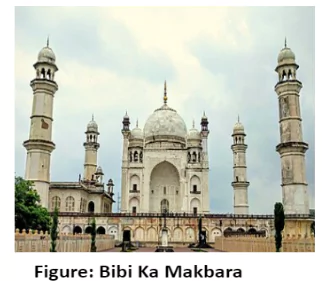![]() May 15, 2024
May 15, 2024
![]() 6971
6971
![]() 0
0
Aurangzeb, also known as Alamgir, ruled over the Mughal Empire from 1658 to 1707. His reign can be divided into two halves: the first twenty-five years were spent predominantly in the north, while the latter years were primarily focused on the Deccan region. Aurangzeb’s rule was characterized by military conquests, stringent religious policies, and patronage of art and literature.


| Must Read | |
| Current Affairs | Editorial Analysis |
| Upsc Notes | Upsc Blogs |
| NCERT Notes | Free Main Answer Writing |
Aurangzeb’s reign was a time of significant military expansion, religious orthodoxy, and cultural patronage. While his strict policies often led to rebellion, he left a lasting architectural and literary legacy. Aurangzeb’s rule represents a complex era in Mughal history, marked by both conquest and cultural achievement.
<div class="new-fform">
</div>

Latest Comments